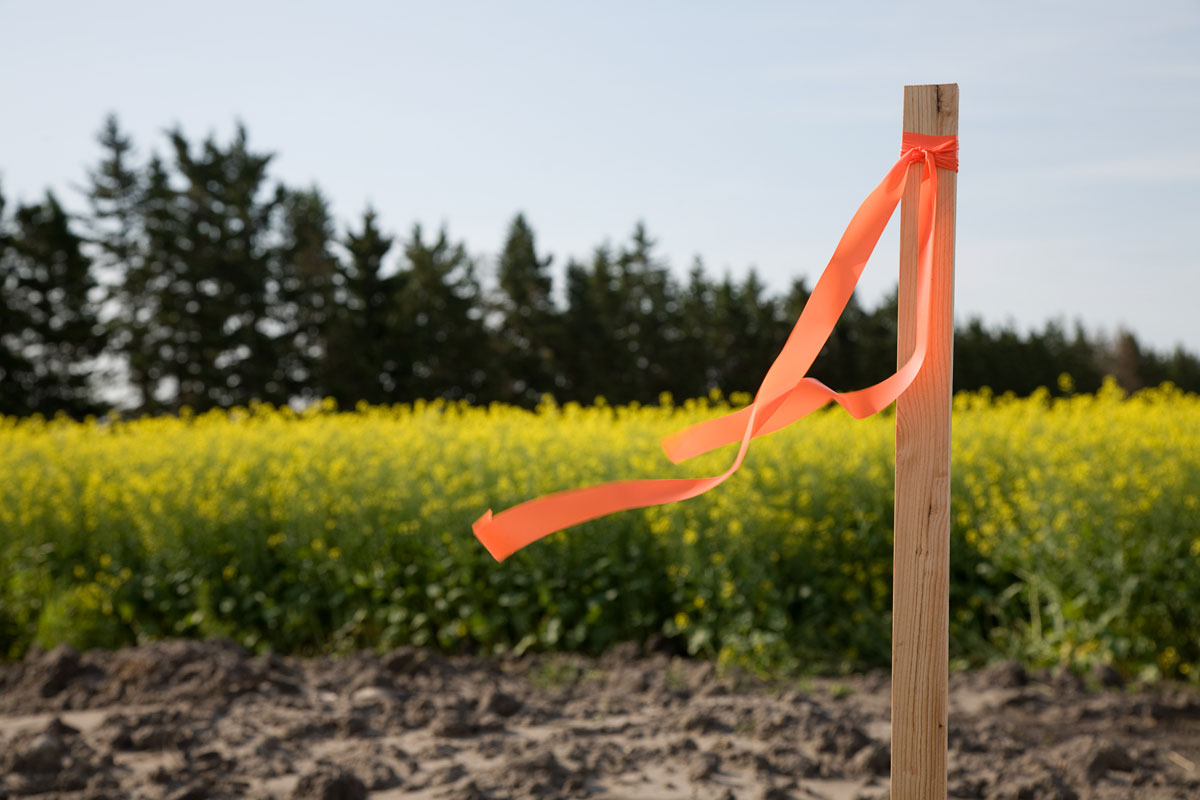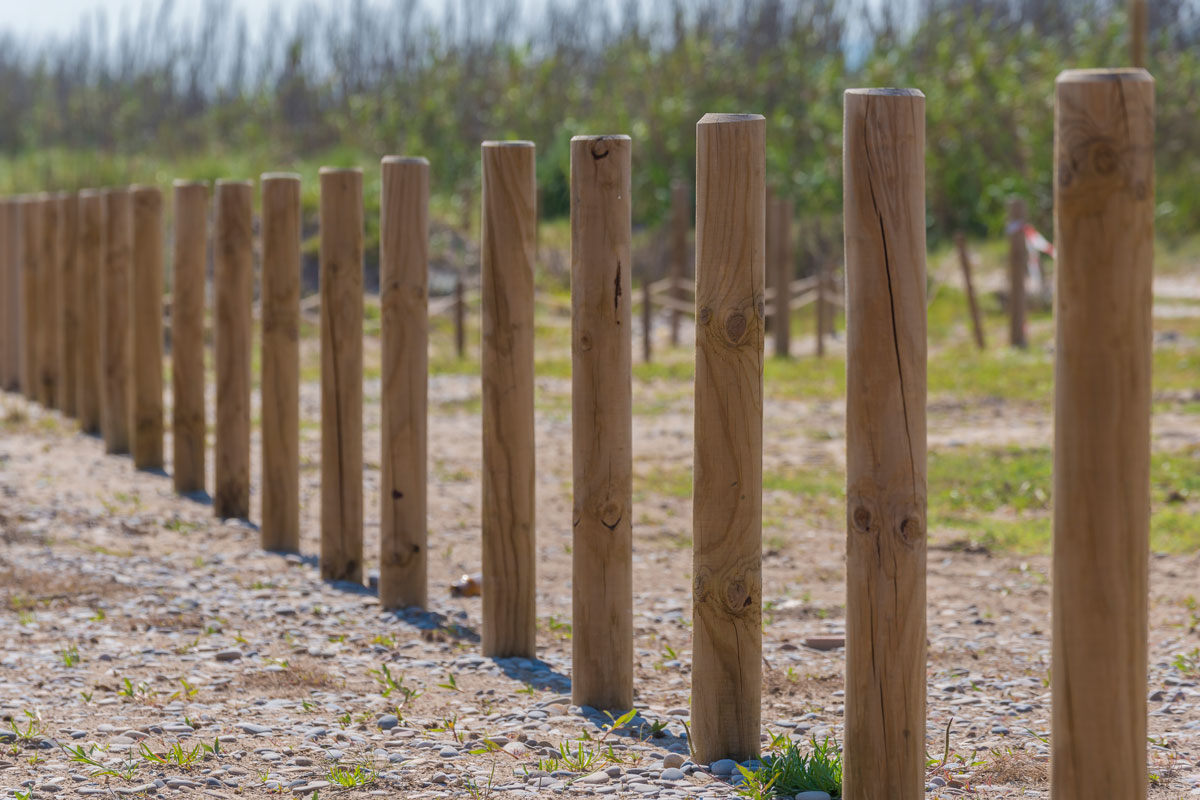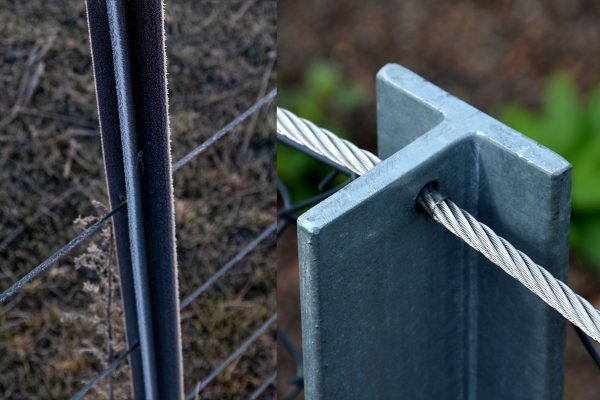Fencing post spikes or anchors are a popular alternative to concrete when it comes to setting up fence posts. But do they really work?
Fence post anchor spikes are great for setting up fences. With fence post spikes/anchors, you don't need big holes or concrete. A fence using spikes is sturdy and stands strong. Plus, using spikes helps to avoid rot in your fence posts.
Below, we’ll discuss what exactly are fence post spikes, how they work, how to install them and compare them to using concrete to install a fence.

What Are Fence Spikes/Anchors And How Do They Work?
Fence post spikes are galvanized or powder-coated steel that comes with boxes at the top. This enables easy placement of the fence posts once they’ve been driven in and leveled properly on the ground.
Spikes eliminate the hassle of having to dig large holes or use concrete. The most common fence post spikes used are 24”, which can support 4 feet high fences.

Types Of Fence Post Spikes
Drive-In Post Spikes
Drive-in fence post spikes are heavy gauge steel anchors that come with built-in bolts. Or, a combination of interior metal teeth and screws is used to fix and secure the posts. They are available in different sizes and last a long time.
Check out this item on Amazon.
Concrete-In Post Spikes
Concrete-in post spikes are used on the soil where drive-in fence post spikes are unsuitable. The "shoe" is set into an 18-inch cube of concrete for the base plate to sit evenly. You must ensure that the spirit is leveled before allowing the concrete to cure.
Check out this product on Amazon.
How To Use Fence Post Spikes?
Place fence post anchors where you want your fence to be, then drive them into the ground with driving tools and a sledgehammer.
Using a spirit level, check if they are vertically aligned. You can then insert the fence posts and secure them.
Do Fence Post Spikes Really Work?

Yes, fence post spikes work great in setting up a good foundation for fencing. They stabilize the fence panels, preventing leaning or sagging.
As we’ve mentioned before, they also protect the wooden post from rotting early. So if you are looking for an easy fencing solution that is as structurally sound as posts set on concrete, go for fence post spikes!
How To Install Fence Post Spikes
The fence post spikes installation is relatively simple. But before you get started, prepare the following tools:
- sledgehammer
- spirit level
- Offcut of the fence post or post-driving tool
Steps to Install Post Spikes
- Put the post-driving tool into the fence post spike to prevent the anchor from getting damaged as you hammer it into the ground. Cut both ends square to get a level surface.
- Drive the fence posts spikes into the soil with a sledgehammer.
- Make sure to check the vertical alignment from time to time with a spirit level because it will be harder to fix as the fence post spike goes deeper into the ground. Use the post-driving tool to reposition the spikes if necessary.
- Once the top box is just 1 centimeter above the ground, place your fence post and secure it with built-in bolts or internal gripping teeth.
TIP: A sledgehammer can cause the fence post spikes to twist due to the off-center force. So turn the spike an eighth clockwise before you drive it in if you are right-handed and vice versa if you are left-handed to avoid twisting.
Fence Post Anchor Spikes vs. Concrete
When choosing how to set your fence posts, there are two main options: anchor spikes and concrete.
Anchor spikes make setting up fences easy. You just push them into the ground and secure your post. No need for digging big holes or mixing concrete. They're sturdy, keeping your fence strong. Another benefit is that they help stop your fence posts from rotting.
On the other hand, concrete means digging holes and pouring concrete to set the posts. It can be tough work but gives you a strong fence. However, concrete can sometimes trap moisture, which might cause your posts to rot over time.
Both methods can give you a solid fence, but spikes offer a simpler, quicker setup and help protect your fence posts from rot.
Sometimes concrete can be the solution to setting fence posts
There are certain situations where choosing concrete might be better than using spikes. Here are a few examples:
- Heavy loads: Concrete footings might provide better stability if the fence is meant to support a heavy load (for example, a privacy fence or a fence in a high wind area).
- Permanent installation: If the fence is intended to be a permanent fixture and not moved or adjusted in the future, setting posts in concrete can provide a more durable and lasting solution.
- Uneven or rocky ground: Driving spikes could be difficult or impossible if uneven or rocky ground. In these cases, digging a hole for a concrete post might be the more practical option.
- Tall fences: For taller fences, especially those over six feet, concrete is typically recommended. A concrete foundation's additional depth and stability can better support a taller structure.
If you are dealing with a special fencing project, consider consulting a professional for more guidance.
Pros And Cons Of Fence Post Spikes
See the main advantages and disadvantages of using fence post spikes:
Pros
Easy to Install
Normally, when erecting a fence post, you have to dig holes, fill the gap with rocks, and seal it with concrete. But with fence post spikes, you need not go through all that.
As mentioned, you just need to sledgehammer the spikes into the ground, saving you time and effort!
Inhibits Wood Decay
Fence post spikes keep the fence posts above the ground, keeping them from dirt and moisture that cause rot.
Quick to Remove
It’s easy to get it out of the ground when the time comes that you have to replace it or the fence posts,
Cons
Incompatible with Some Types of Fences
Fence post spikes are ill-suited with chain links and commercial fence posts.
Limited Height
Generally, fence post spikes can only hold and support up to 60” fences. Otherwise, they might warp.
Expensive
Fence post spikes are more costly than concrete. The price starts at $25 each.
Difficult to Level
Since they are sledge-hammered into the ground, getting them leveled can be hard.
Can You Use Use Fence Post Spikes With Concrete Posts?
No, they are only made for wooden posts. If you plan to use concrete posts, you need to set and stabilize them with concrete or cement.
For installation tips using concrete, check out "Can You Pour Concrete For Fence Posts In The Rain?"
Can You Use Fence Post Spikes For A Pergola?
You can build pergola posts with bolt-down fence post shoes or concrete-in post spikes. You can fix them on existing walls or concrete, so you need not worry about messing up or destroying your yard. They are also a perfect choice for patios.
Are There Better Alternatives To Fence Post Spikes?

You may use Postcrete. It’s a ready-to-use cement consisting of aggregates, sand, and additives that require no mixing. This one is suitable for wood, metal, and concrete fencing. One bag is enough for one fence post.
You just need to dig at least a 2 feet hole in the ground, with the lower half rounded like a ball, for a steady fixing. It can last longer than fence post spikes. Here’s how to use Postcrete or post-mix.
In terms of fencing, there’s no one size that fits all. To say the least, Postcrete is the go-to if you want to set up a permanent fence. But if you plan to put up a fence that you can replace, revamp, and remove, go for fence post spikes.

So, to sum this up: Fence post anchor spikes work great. Fence posts anchored with them are no different from fence posts set on concrete in terms of stability.
In addition, they are quick and easy to install. They are also almost effortless to get off the ground in case you plan to replace and remove them later.
If you liked this post, you might also like:
5 Types Of Fence Post Caps [How To Choose For Your Type Fence]







